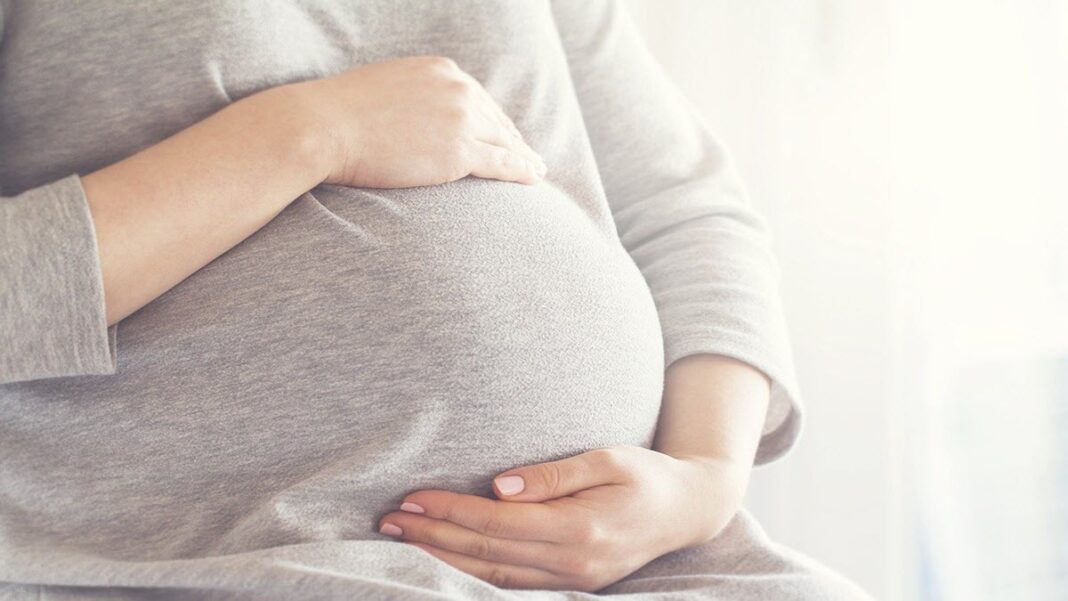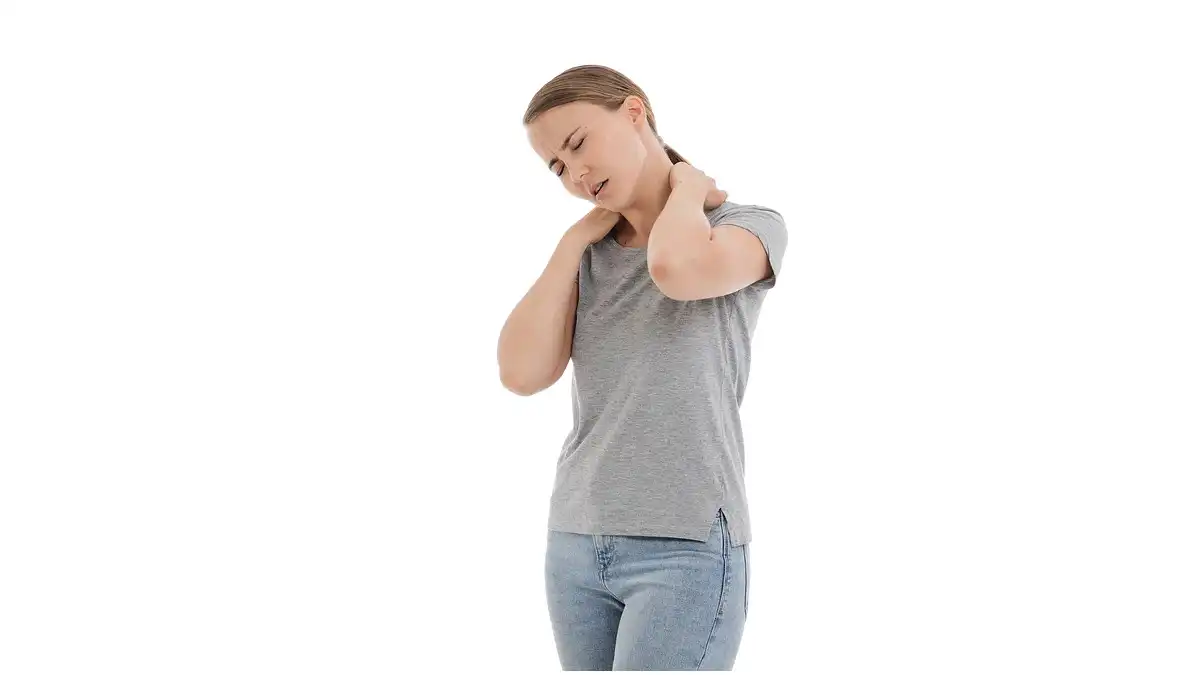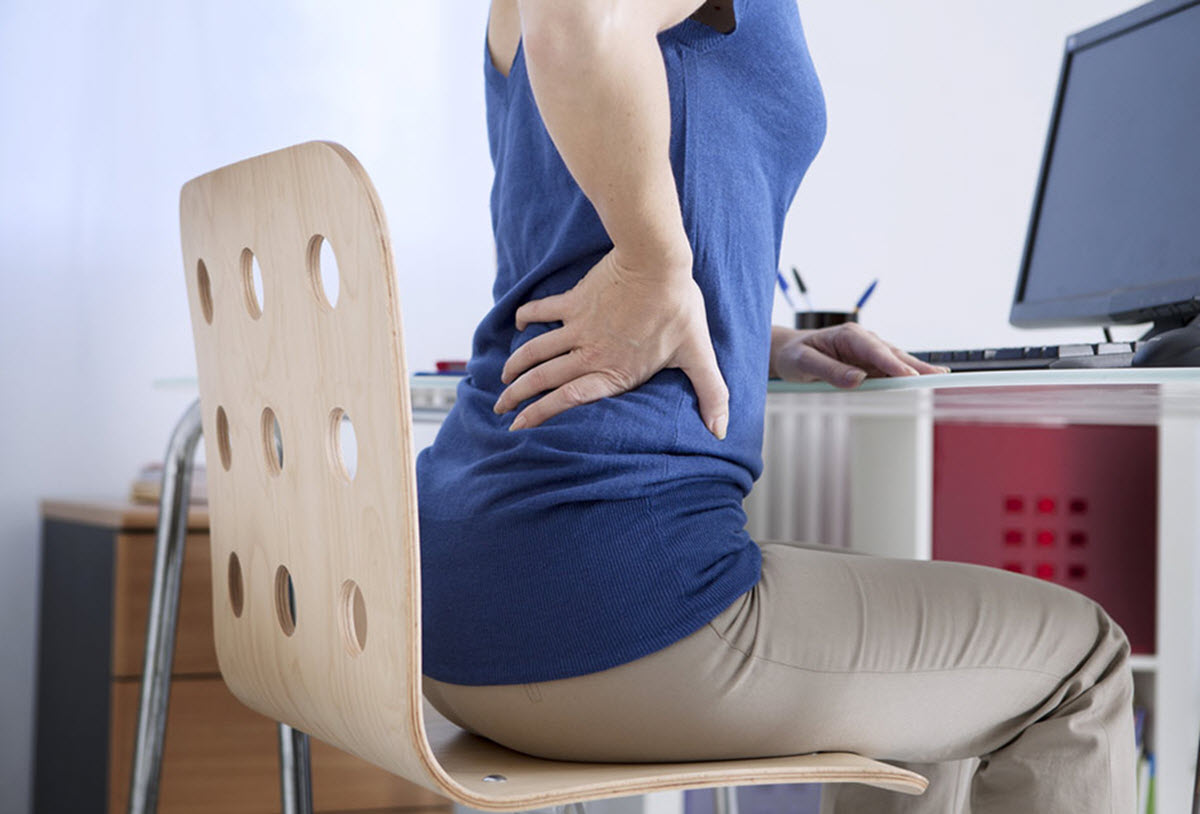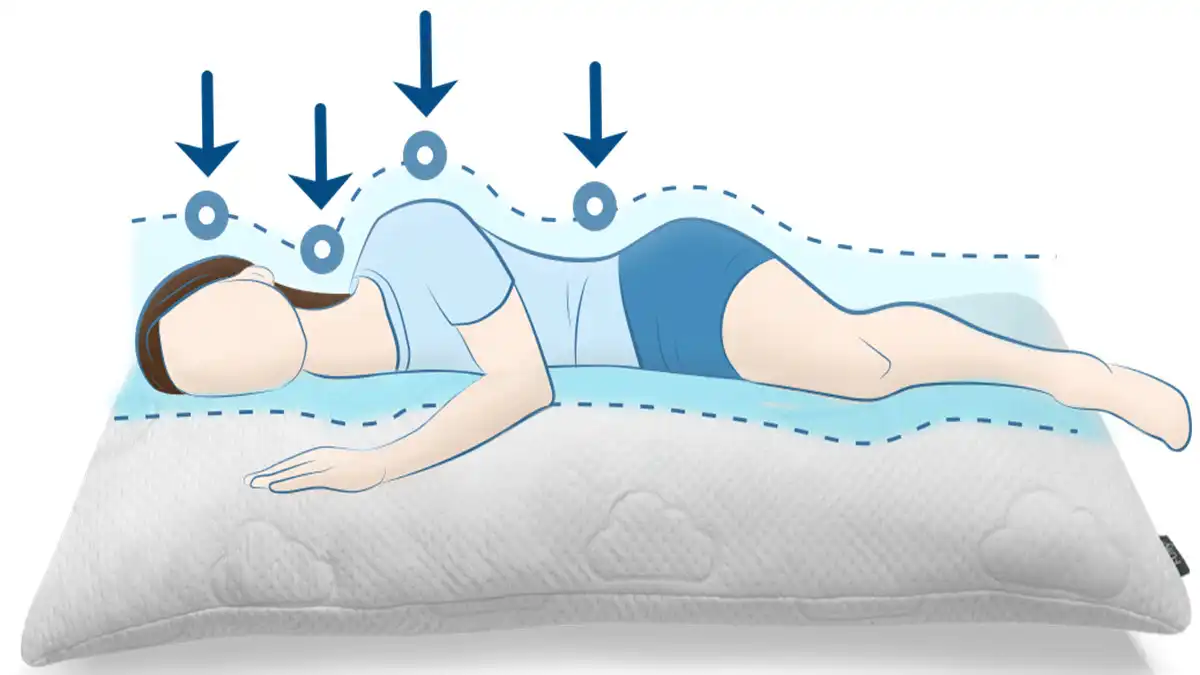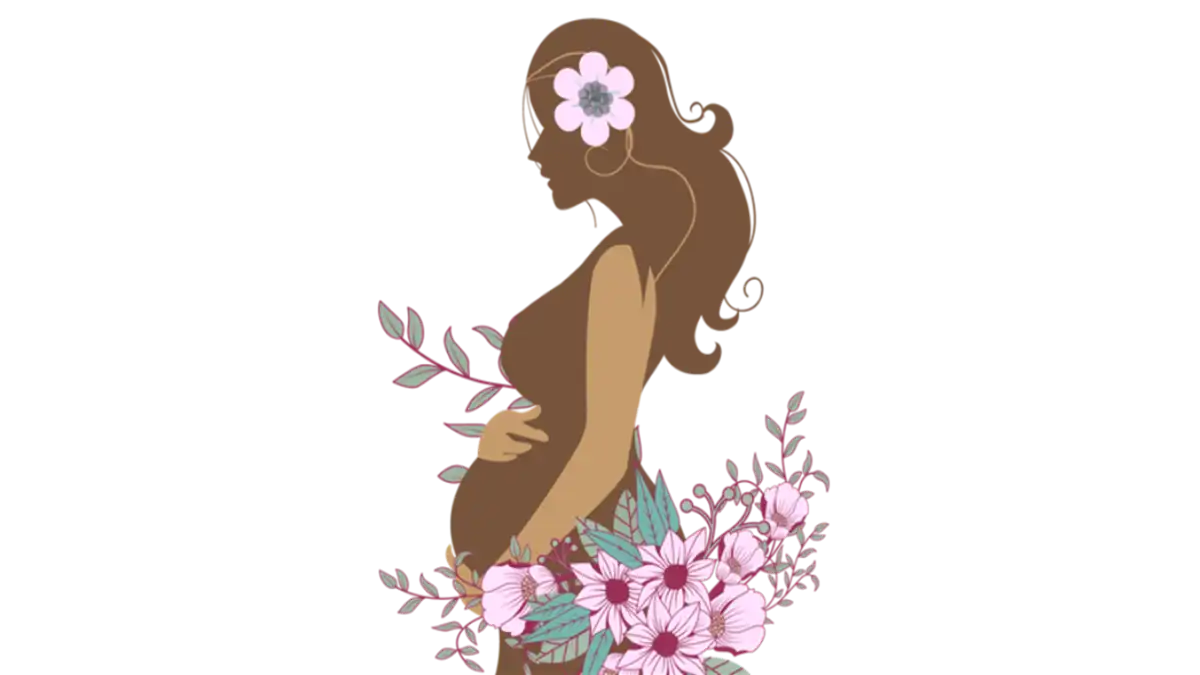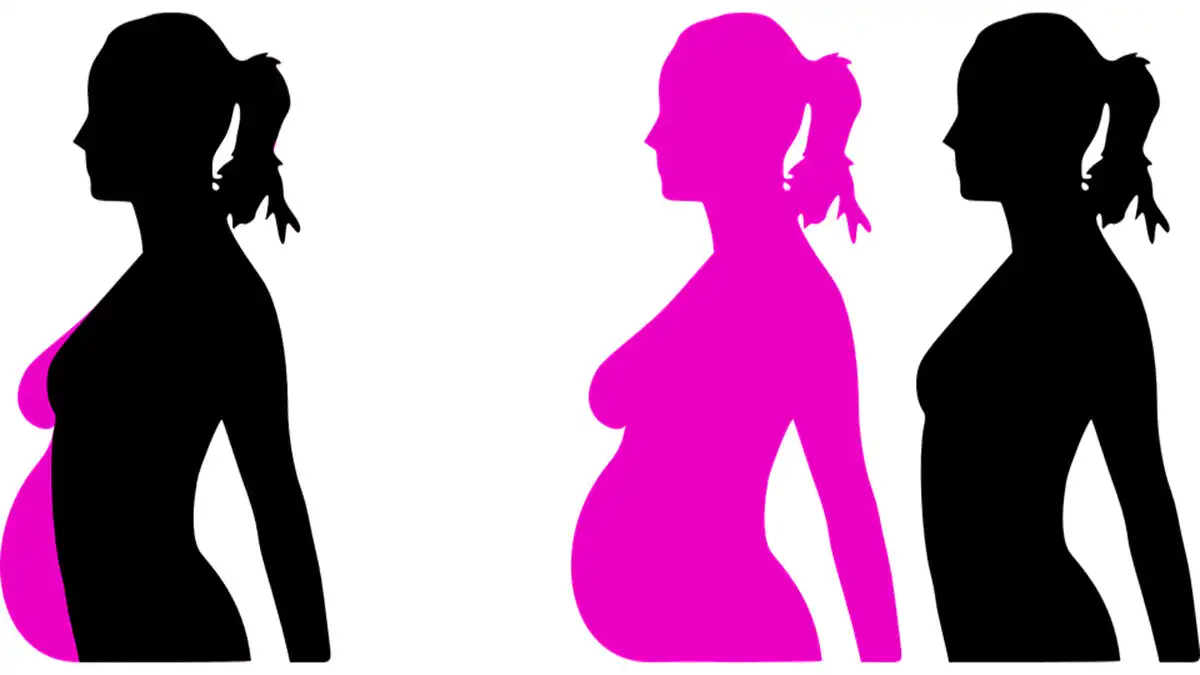Introduction
The woman’s body undergoes significant changes during pregnancy in order to adapt to the development of the fetus. These changes become particularly apparent during the last trimester. To maintain functional balance, significant adjustments are necessary.
Harvard University highlights the importance of the curves that form during pregnancy. Experts say these curves, particularly the lumbar curve, evolved in our ancestors for crucial reasons. Without these adjustments, primates that walked upright would have had difficulty escaping predators during pregnancy. The lumbar curve, extending over a longer part of the spine, helped avoid excess weight on the back muscles, thus preventing pain and fatigue. This adaptation also preserved foraging ability and the ability to escape predators.
During pregnancy, the pregnant woman must deal with a significant increase in curves, thus allowing her posture to be adjusted to maintain balance, even when the weight of the abdomen can reach almost 7 kg more than normal, in especially in recent months. These adjustments are essential to reduce the discomfort associated with lower back pain and ensure optimal functionality of the body.
Additionally, hormonal changes also affect posture and joint mobility. For example, a hormone called relaxin is produced in greater amounts during pregnancy. This hormone relaxes the ligaments to allow expansion of the pelvis, thus facilitating the passage of the baby during childbirth. However, this ligament relaxation can also lead to joint instability, which can increase the risk of injury and pain, particularly in the hips and lower back.
Changing posture during pregnancy can also affect how muscles are used. Some muscles may become overloaded, while others may become weaker from constant stretching. This can lead to muscle imbalances, which can contribute to pain and tension in different parts of the body, such as the back, hips and legs.
Despite these physiological and anatomical changes, the pregnant woman’s body remains surprisingly adaptable. Muscle strengthening and posture maintenance exercises can be beneficial in preventing pain and strain, as well as promoting better mobility and balance. In addition, chiropractic or osteopathic care can help correct postural imbalances and relieve pain associated with pregnancy.

Biomechanical change
List of changes
- Postural changes : During pregnancy, the pregnant woman’s center of gravity shifts forward due to increased abdominal weight. This can lead to increased lumbar lordosis (hollowness in the lower back) and increased thoracic curvature to compensate.
- Ligament softening : Hormones such as relaxin are released during pregnancy, which softens the pelvic and joint ligaments. This allows greater joint mobility, particularly in the pelvis, to facilitate the passage of the baby during childbirth.
- Increased thoracic curvature : To compensate for the forward shift in the center of gravity, there may be an increase in thoracic curvature, which can lead to changes in posture and associated pain.
- Joint instability : Due to ligamentous softening, some pregnant women may experience joint instability, particularly in the hips and pelvis. This can increase the risk of injury and joint pain.
- Enlargement of the pelvis : To allow the passage of the baby during childbirth, the pregnant woman’s pelvis can open slightly, thus increasing its anteroposterior and transverse diameter.
- Compression of nerve structures : Increased abdominal volume can put pressure on nerve structures, which can lead to symptoms such as numbness, tingling, or pain along the lower extremities.
- Changes in Gait and Balance : Due to postural changes and increased abdominal weight, walking may become slower and less stable in pregnant women. They may also be more likely to lose balance, especially during the third trimester.
- Widening of the rib cage : To accommodate the growth of the uterus and the development of the fetus, the pregnant woman’s rib cage may widen slightly, allowing for adequate lung expansion.
- Changes in respiratory mechanics : Due to widening of the rib cage and abdominal compression, respiratory capacity may be reduced in some pregnant women, which may lead to a feeling of dyspnea (difficulty breathing)
- Increased body weight : During pregnancy, a woman gains weight to support the growth of the fetus, placenta, and fat stores needed for breastfeeding. This increased weight can place additional strain on joints and muscles, leading to an increased load on the musculoskeletal system.
- Altered Center of Gravity : Due to increased abdominal weight and postural changes, the pregnant woman’s center of gravity is shifted forward. This can influence the way she moves, stands, and performs daily activities.
- Breast enlargement : A pregnant woman’s breasts may increase in size and weight in preparation for breastfeeding. This can change the center of gravity and create additional tension in the upper back and shoulders.
- Compression of internal organs : Due to the expansion of the uterus and the growth of the fetus, the internal organs of the pregnant woman, such as the stomach, intestines and bladder, may be compressed. This can lead to symptoms such as heartburn, difficulty breathing, and frequent urination.
- Widening blood vessels : During pregnancy, the pregnant woman’s blood vessels dilate to increase blood flow to the placenta and fetus. This can lead to increased blood pressure and symptoms such as dizziness and varicose veins.
- Changes in digestion : Pregnancy hormones, such as progesterone, can slow down intestinal transit, which can lead to problems such as constipation. Additionally, pressure from the growing uterus can disrupt normal digestion.
- Foot deformity : Due to increased weight and loose ligaments, a pregnant woman’s feet may sag and widen, which can alter gait and increase the risk of foot pain and podiatric problems.
- Lumbar Hyperlordosis : Due to increased abdominal weight and postural changes, some pregnant women may develop lumbar hyperlordosis, which results in excessive curvature in the lumbar region. This can lead to muscle tension and lower back pain.
- Pelvic Floor Dysfunction : The pelvic floor may undergo biomechanical changes during pregnancy due to pressure from the growing fetus and softening of the pelvic tissues. This can lead to symptoms such as urinary incontinence, hemorrhoids and pelvic prolapse.
- Widening of the intervertebral spaces : During pregnancy, the intervertebral spaces of the spine may widen due to the effect of pregnancy hormones on the intervertebral discs. This can increase the risk of herniated discs and back pain.
- Hand and wrist deformity : Some pregnant women may develop carpal tunnel syndrome due to water retention and fluid buildup in the tissues, which can lead to numbness, tingling, and pain in the hands and wrists. hands and wrists.
- Changes in Blood Flow : During pregnancy, the pregnant woman’s blood volume increases to meet the increased needs of the growing fetus. This can lead to dilated blood vessels, increased blood pressure and symptoms such as varicose veins and heavy legs.
- Fluid retention : Fluid retention, also called edema, is common during pregnancy due to hormonal changes and increased pressure on blood vessels. This may appear as swelling of the hands, feet, ankles and face.
- Changes in lung function : Due to increased abdominal pressure, lung capacity may be reduced in some pregnant women, which may lead to a feeling of shortness of breath and an increased breathing rate, especially during the third quarter.
- Relaxation of abdominal muscles : During pregnancy, the abdominal muscles may relax and stretch to accommodate the growing uterus and developing baby. This can lead to decreased strength and stability in the abdominal area.
- Changes in gait biomechanics : Due to increased abdominal weight and postural changes, the gait of the pregnant woman may be altered. She can take a slower and wider gait to compensate for the imbalance in the center of gravity.
- Changes in pain perception : During pregnancy, some women may experience an increase in pain tolerance due to the effect of hormones such as endorphins. This can affect how they perceive and respond to pain during labor and delivery.
- Changes in sitting posture : Due to the increase in abdominal volume, the pregnant woman may have difficulty adopting a comfortable sitting position. She may feel the need to sit more frequently and change positions to relieve pressure on her back and hips.
- Changes in muscle balance : During pregnancy, certain muscle groups may become overloaded, while others may become weaker due to constant stretching. This can lead to muscle imbalances and tension in different parts of the body.
- Changes in tactile sensation : Due to the enlargement of the abdomen and increased pressure on peripheral nerves, some pregnant women may experience a decrease in tactile sensation in the abdominal area and around the uterus .
- Changes in proprioception : Proprioception, which is the body’s ability to perceive its position in space, may be impaired during pregnancy due to postural changes and increased abdominal weight. This can affect the balance and motor coordination of the pregnant woman.
- Changes in body composition : During pregnancy, there may be a redistribution of body mass, with an increase in fat mass and a decrease in lean mass. This can influence body mechanics and the distribution of loads on joints and muscles.
- Changes in kidney function : Due to increased blood volume during pregnancy, kidney function may also be changed. The kidneys have to work harder to filter metabolic waste and remove toxins from the body.
- Changes in thermoregulation : During pregnancy, the body may have more difficulty regulating its temperature, due to increased metabolism and blood circulation. This can make the pregnant woman more sensitive to temperature changes and episodes of overheating.
- Changes in skin vascularity : Due to increased blood volume, skin vascularity may also be increased during pregnancy. This can result in redder, warmer skin, as well as increased sweating.
- Changes in motor coordination : Due to postural changes and increased abdominal weight, the motor coordination of the pregnant woman may be affected. She may have more difficulty making precise, synchronized movements.
- Changes in exercise tolerance : During pregnancy, exercise tolerance may vary from woman to woman and may change throughout the trimesters. Some pregnant women may experience a decrease in their ability to exercise, while others may maintain a high level of physical activity.
- Changes in muscle strength : Due to hormonal changes and increased pressure on the muscles, the muscle strength of the pregnant woman may be affected. Some muscle groups may become weaker, while others may become stronger to compensate.
- Changes in pain perception during labor : During labor and delivery, pain perception may be altered due to the activation of pain pathways and the release of endorphins. This can influence how the pregnant woman experiences and manages pain during the birthing process.

Osteopaths must ensure adequate mechanics across the spine to release as many areas of restriction as possible to accommodate the more effective change in curve shape during pregnancy.
The difference allows women to adjust their posture in a way that helps them maintain balance and feel less uncomfortable with lower back pain. Even in the last months of pregnancy, when the abdomen can weigh almost 7 kg more than normal.
The spiral movement during the baby’s descent
The process of descent of the baby during childbirth is characterized by a spiral movement, which fits into the natural shape of the maternal pelvis. This particular shape allows the baby’s head to align more easily along one of the two axes, thus facilitating its progression through the birth canal.
The sacroiliac joint plays a crucial role in this process. It must often open to allow easy delivery by providing the flexibility necessary to adapt the pelvis to the needs of the descending baby. However, in the case of a twisted or relatively restricted pelvis, this opening may be compromised, resulting in uneven distribution of forces on both the mother’s head and the fetal skull.
This asymmetry of force can make the birthing process more difficult and uncomfortable for the mother, while increasing the risk of complications for the baby. Indeed, limited opening of the sacroiliac joint can cause misalignment of the baby’s head in relation to the maternal pelvis, which can prolong the duration of labor and require medical interventions to facilitate the baby’s descent.
It is therefore crucial that the osteopath carefully assesses the mobility of the sacroiliac joint and the symmetry of the maternal pelvis before delivery. Specific osteopathic techniques can be used to correct imbalances and restrictions that may hinder the baby’s natural spiral movement as it descends.
The psoas as a guide during childbirth
The psoas, a muscle deeply buried in the pelvis, plays an essential and often overlooked role during childbirth. Although traditionally associated with posture and mobility of the pelvis, the psoas can also serve as a valuable guide throughout the birth process.
During childbirth, the psoas, this often overlooked muscle, is of capital importance. According to osteopathic expert Renzo Molinari, the two muscular sides of the psoas play a crucial role in acting as guides for the vertical expansion of the uterus. This expansion is essential to allow the baby to move down through the birth canal efficiently and naturally. When the pregnant woman is in labor, the psoas can act as an intuitive indicator of labor progress and a tool to promote a smoother, less painful delivery.
Think of the psoas as cords on either side of the pelvis, responsible for holding the uterus in an optimal position during labor. If one of these muscle sides has different tensions, or if the spine is not oriented evenly, this can cause complications when the baby is lowered. Indeed, an asymmetry in the tensions of the psoas can cause a deviation, thus leading to a twist of lateral flexion and rotation of the uterus. This twisting can not only slow down the birth process, but also increase the risk of complications for mother and baby.
This is where osteopaths proactively intervene to ensure that the psoas muscles are relaxed and balanced. Using muscle release and structural realignment techniques, osteopaths can help relax asymmetrical tensions in the psoas and restore musculoskeletal balance. By working with the pregnant woman before and during labor, osteopaths can help prevent complications related to uneven psoas tension and promote a smoother and more comfortable birth.
Osteopathic intervention may be particularly beneficial for women with postural imbalances or a history of lower back pain during pregnancy. By releasing tension in the psoas and realigning the spine, osteopaths can not only improve the comfort and well-being of the mother during pregnancy, but also promote optimal conditions for an uncomplicated delivery.
In addition to its physical role, the psoas can also act as an emotional guide during childbirth. By connecting to her psoas, the laboring woman can cultivate a feeling of centeredness and confidence in her body, which can help reduce pain and tension during labor. By focusing on breathing and remaining aware of the sensation in her psoas, the laboring woman can maintain a state of relaxation and connection with her baby, promoting a more positive and rewarding birth.

As contractions become more intense and the baby moves down the birth canal, the psoas continues to play an active role in guiding the baby’s movement through the pelvis. By contracting and releasing in sync with uterine contractions, the psoas can help direct the baby’s head toward the cervix and facilitate its progress through the birth canal. This coordination between the psoas and uterus promotes a more efficient delivery and reduces the risk of complications such as prolonged labor or the need for medical interventions.
Childbirth: Preparation and Importance of Pelvic Integrity
Childbirth, this moment of capital importance in a woman’s life, puts different structures of her body to the test, particularly the pelvis and pelvic floor. These structures play a crucial role in the birth process, allowing a gradual and safe descent of the baby through the birth canal. However, for this event to occur optimally, it is essential that the pelvis and pelvic floor maintain their functional integrity while being adaptable enough to open during childbirth.
The elasticity of the pelvic floor and perineum is of vital importance in this context. Indeed, good elasticity of these structures allows the baby to descend with a minimum of distress for the mother and the child. This elasticity also ensures a faster and more comfortable recovery after childbirth. Thus, exercises aimed at strengthening and softening the pelvic floor can be of great use in preparing the body for this intense physiological process.
Likewise, the flexibility of the sacrococcygeal joint plays a crucial role during childbirth. This joint, located at the base of the spine, must be mobile and adaptable to allow adequate opening of the pelvis when the baby descends. A stiff or blocked sacrococcygeal joint can hinder the birthing process, making passage of the baby difficult or even dangerous.
Furthermore, it is important to note that childbirth can present risks for certain structures of the pelvis. The coccyx, for example, is a vulnerable structure that could fracture during childbirth, particularly in cases of unfavorable fetal position or difficult obstetric maneuvers. To minimize these risks, the preventive intervention of the osteopath can prove valuable.
Before giving birth, it is recommended that the osteopath carries out a thorough assessment of the pelvis and pelvic floor of the future mother. The goal is to ensure that these structures are flexible and mobile enough to facilitate the birthing process. Specific osteopathic techniques can then be used to correct any restrictions or imbalances, allowing the work to progress more smoo

